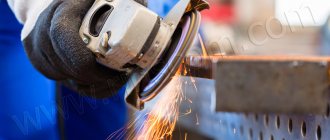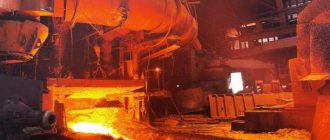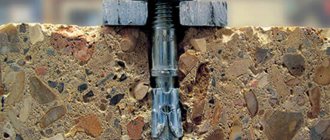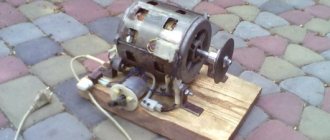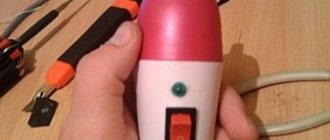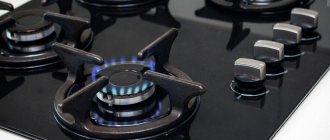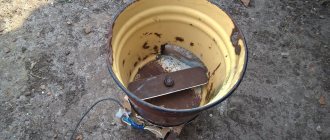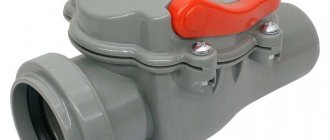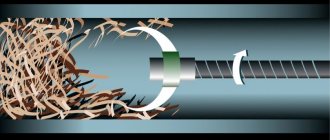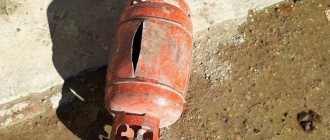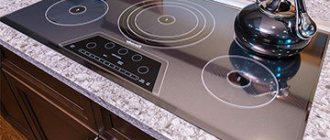Material cutting methods
As with any metal, methods for cutting cast iron are divided into thermal and mechanical. The choice of a specific tool depends on the design features. The following is equipment that saws (or cuts) cast iron:
- pipe cutter;
- angle grinder;
- chisel;
- hacksaw for metal;
- jigsaw
- plasma installation;
- gas cutters.
Now it’s worth evaluating cutting using the mentioned tools with objects made of cast iron.
Diamond ropes
Diamond wire is a steel cable with diamond-coated bushings (rails) along its length. Thanks to diamond wires, highly reinforced steel and reinforced concrete structures are cut and dismantled. The time spent dismantling or cutting an opening in a structure depends on the thickness of the material and metal inclusions. The rope chains are driven by powerful hydraulic motors.
Diamond wire DS100 GX/DS 88/DS 100/DS 120/DS 140
- Diamond blades
- Diamond crowns
- Diamond cups
- Diamond ropes
- Accessories
- Test1
Types of Diamond Wires
There is a division of diamond wires according to the type of material they cut and the cutting technique.
- Diamond wires for metal are made from high quality steel. Diamond-coated pearl bushings are located on them every 25-30 mm. The diameter of beads for cutting metal varies from 8 mm to 11 mm. The larger the diameter of the diamond bushings, the harder the material the rope can cut, the average diamond wire contains 48 diamond coated bushings.
- Diamond wire for cutting concrete and reinforced concrete is suitable for dry and wet cutting. The rope cutting installation is equipped with a hydraulic motor and a water supply system; the weight of the structure is up to 90-95 kilograms. The diameter of pearls on a chain for concrete ranges from 10.5 to 12 mm in an amount of 40 pieces.
- A diamond chain for granite and marble cuts natural stone of any shape and is used to access the material in the most inconvenient places. The cutting speed is 1-3 sq/m per hour. The thickness of the diamond wire for cutting natural stone is 11 mm.
Diamond wires for steel are medium hard, 11mm in diameter and suitable for both dry and wet cutting. The advantage of the wet method is that the process is not interrupted to cool the diamond chain. The use of diamond wires speeds up the work process and saves other consumables.
Using Diamond Wires for Cutting
The advantage of professional diamond chains is that they can quickly cut through very hard and abrasive materials.
- Diamond wire cutting is used for quick dismantling of highly reinforced structures and cutting of natural stone of different hardness categories.
- A diamond chain can be used to cut heavy-duty cast iron, reinforced concrete, and any metal structures stationary and using portable rope cutting units.
Rules for choosing a diamond wire
When choosing a diamond wire, you must consider:
- The greater the density of the reinforcement of the building structure, the larger the size of the diamond bushings should be.
- When purchasing diamond wires, you need to know that the size of the diamond bushings must match the technical capabilities of the wire cutting installation.
- The bonding material in the diamond chain must be suitable for the material being cut. For example, for dismantling reinforced structures, a soft chain binder material is selected.
Our company sells diamond wires at manufacturer's price; the cost of the chain depends on the number of diamond bushings, their diameter, and what type of material they process.
Pipe cutter
This is a special device for cutting pipes from different materials. There are manual (mechanical) and electric tools. Both types are suitable for diameters 15-360 mm.
First, a carbide disk is mounted on the device. The removable element has a number of advantages over classic abrasive ones. For example, the cutting speed is increased by 4 times, there is no sparking and no need to add any substances to the cutting zone. Diamond coating is applied on top of the cutting edge, which extends the service life of the products. Examples of pipe cutters for cast iron pipes are portable Exact Pipecut products for diameters less than 360 mm.
Alas, it is rare that a home pipeline can be easily cut with a pipe cutter. It may be difficult for a tool to access it, or the cutting area may be bent so that it cannot be grasped by the device. Therefore, it is worth considering other options.
Dismantling of cast iron pipes
So let’s try to figure out how to cut cast iron pipes. If cast iron pipes were previously connected with sulfur, then the task ahead will not be easy. But here there is advice on how to disassemble cast iron pipes. Like any other substance, sulfur must be destroyed when exposed to something. And this “something” is an open fire. When sulfur is heated with a blowtorch, it becomes viscous. This makes disassembling the pipes very easy.
You need to use open fire carefully so as not to cause a fire. In addition, when the pipes are heated, sulfur dioxide will be released from the connections. Therefore, you need to take measures to protect your own health. The connection can be heated for several hours. To avoid suffocation during this time, you need to wear a gas mask. It's a good idea to have a bucket of water nearby in case something catches fire.
Angle grinder
Working with an angle grinder is quick and convenient, but not without its drawbacks. For example, it only cuts in a straight line. An attempt to make a curved cut will result in the disc being “bitten”, breaking, and possible injury to the user. Therefore, the machine is used for straight cutting. Another disadvantage is the fire hazard of the method (abrasive disc + metal = sparking). Before work, you will have to wear goggles, protection for your face and hands.
Cutting with a circle is more efficient than with a jigsaw, which is why users often choose a noisy grinder. When buying a cutting wheel, prefer products with a bakelite bond, because they are much stronger than their ceramic counterparts.
Working with a chisel and hammer
This pair of products will help separate cast iron in hard-to-reach places. Dismantling work begins with pipes remote from the riser in places where a grinder or hacksaw cannot be inserted. Since cast iron is a brittle material, it is easily destroyed after point dynamic loads.
A good impact tool has a rubber or polymer attachment to slightly soften the impact. This is necessary so that pieces of cast iron do not fly around, get into the riser and create a blockage.
The chisel and hammer work great with Soviet-era cast iron, that is, combined with sulfur, aluminum and cement. As you move towards the riser, there is usually more free space for work, so further cast iron can be cut with a more efficient device. As with the grinder, when working with a chisel, it is recommended to cover areas of the body into which cast iron splinters may fly off.
The productivity of work is extremely low, but sometimes you can’t do without them.
How to cut a cast iron pipe with your own hands (video)
The most difficult step when replacing an old pipeline is the dismantling of a cast iron pipe that has served its purpose. Previously, when constructing communications, pipes made of cast iron were used, the connection of which was made with cement mortar, sulfur or aluminum. Pipelines assembled using the last two substances are very difficult to destroy, so you need to prepare for lengthy dismantling work. And this article will tell you about the technology for their implementation.
Laying a new sewer often begins with dismantling the old one
General progress of work
At first it may seem that dismantling outdated communications is a trivial matter, because breaking is not building. However, this requires just the right, qualified approach, because otherwise it is easy to damage the riser connecting several apartments at once. And this is a real disaster, the consequence of which will be the need to replace the common riser and, of course, boundless indignation of the neighbors.
The cast iron pipe should be dismantled carefully, adhering to the following order:
- Turning off the supply of tap water to the apartment.
- Using an adjustable wrench, disconnect the hose supplying water to the flush tank from the toilet.
- Dismantling the toilet (you need to unscrew the bolts securing it to the floor).
Bathroom after dismantling the toilet
- Freeing the bathroom from foreign objects and equipment that may interfere with the replacement of the pipeline (bidet, sink, washing machine, etc.).
- Dismantling the old sewer system.
How to cut a cast iron bed?
Due to the fact that cast iron is characterized by high fragility, pipes located at some distance from the riser can be easily broken with a hammer.
- Removing pipes connected directly to the old riser.
- Installing the cuff on the tee socket. First you need to thoroughly clean the socket of old lubricants that interfere with the quality installation of the new sewer system.
Destruction of joints with a torch
If the joints of a cast iron pipeline are fastened with sulfur, this greatly complicates the dismantling task.
However, we have some tips on how to disassemble cast iron sewer pipes in this case. Like any chemical substance, sulfur is destroyed under certain influences, namely, during prolonged heating with an open flame. High temperatures make it viscous and plastic, making it easy to remove the substance from the surface.
Plasma cutting
The method relates more to production than to household use, so it will not be discussed in detail. If the goal is minimal material consumption, speed of operation, and noiselessness, there is no better equipment for cutting cast iron. The plasma will make cuts in workpieces with a thickness of more than 200 mm, and the sawn material will hardly have to be processed at the end of the work.
The method is used by large metallurgy and industrial enterprises where there is a need for cutting and transporting cast iron scrap. Plasma installations are indispensable for large-scale work.
Gas cutting
There are two methods of gas cutting of cast iron:
In the first case, the workpiece is exposed to a thin jet of flame supplied under high pressure. The combustion product is usually a mixture of oxygen with kerosene or diesel fuel. By the way, it is an effective method for eliminating man-made accidents.
The second method resembles the oxygen gas method, only the cutting element is a thin tube made of hardened steel. Its tip is heated to almost 1500 degrees (welding/soldering iron/lamp), then oxygen is supplied through it, ignited at the outlet and heated to 2000 degrees. The resulting burning mixture easily copes with thick cast iron.
Both methods are good, but there are disadvantages - it is important to have experience working with gas equipment. Responsible and precise cutting is performed only by a professional. The second drawback is the release of gas that is harmful to health during operation of the cutter.
The method is suitable for working outdoors or in the garage. For example, the need to remove a cast iron lock from a swing gate. The cutter works quietly, you won't disturb anyone.
Essence of the process
At the moment of formation of the oxygen stream, flux, most often iron powder, is slowly and continuously supplied. When burned, the powder releases the necessary additional amount of heat, thereby increasing the cutting temperature range. This method allows the formed oxides not to harden. Oxygen cutting using flux is used for:
- • high-alloy steels containing chromium and nickel, the components of which during the welding process form refractory oxides that are not eliminated by an oxygen jet;
- • work with cast iron and non-ferrous metals that are sensitive to temperature fluctuations.
Types of fluxes - iron and aluminum powders, quartz sand, silicocalcium and ferrosilicon - ceramic fluxes (for low-alloy steel), ferrophosphorus (for cast iron).
Types of units
If you are planning to make a repair and are choosing a device, then the following information will definitely interest you.
There are quite a few types of cutters. They all have different devices and characteristics.
Let's study the most popular of them:
- The oxygen apparatus is an ejector unit in which the burning jet is formed by oxygen supplied under pressure. The oxygen autogen is considered one of the most budget-friendly devices and is quite suitable for DIY cutting;
- A kerosene cutter, as the name suggests, operates using kerosene vapor. As a rule, it is used when cutting carbon steel no more than 20 cm thick. It is almost never used for cutting with your own hands, since it has a complex structure and is used mainly in industrial work (the characteristics of the burner allow it to be used in the coal or mining industry, underground , while it is undesirable to use a propane or acetylene cutter there);
- A propane machine is used when cutting products that contain non-ferrous and ferrous metals of different compositions (most often, a propane autogen is used when cutting cast iron - batteries or pipes). Professionals pay attention to the safety and reliability that a propane device provides compared to the use of other units. Therefore, it is propane autogen that is most often used when doing DIY work. In addition, if you use the propane method of metal cutting, you can be sure that efficiency and productivity are guaranteed;
- An acetylene gas torch is used to process parts and sheets that are thick. All such burners have separate valves, with the help of which you can set a higher speed and power of gas supply during operation. There are even portable cutters that require an acetylene mixture to cut metal. Since acetylene allows the flame to reach the highest temperature, despite the compact size of the device, it can cut even very thick metal. This portable cutter is extremely convenient for DIY use and is therefore in great demand.
But still, universal ejector devices are the most popular. Universal autogens can cut metal in any direction and at any angle.
At the same time, they are extremely easy to use and are lightweight. One of the latest developments by manufacturers is a gas cutter with piezo ignition.
It is extremely convenient for do-it-yourself use, since such a device is turned on with one press of a button.
But such an autogen is quite expensive, so if you need a device for a short period of time and for a small volume of metal cutting, then purchasing such a torch will be inappropriate and wasteful. It is much better to buy a mini cutter.
Useful tips
When starting to cut cast iron, it is worth remembering useful recommendations to make your work easier and safer.
- When cutting large cast iron, make sure there are supports. This will prevent the cut part from falling and biting the tool.
- Don't neglect your partner's help. Its involvement will make it possible to organize additional lighting, speed up the selection of tools, and reduce the risk of accidents.
- When purchasing canvases, circles and other consumables, give preference to certified products.
- Before starting work, clean the work area and make sure that there are no foreign objects under your feet that could cause a fall or restriction of movement.
Regardless of the chosen method of cutting cast iron, it is worth using personal protective equipment. With their help, it will be possible to protect the organs of vision, hearing and skin.
Mini cutter
A mini-cutter is a type of portable autogen for metal work, but with an even smaller size.
Essentially, a mini-cutter is a lighter that has a gas cutter nozzle, which is located on top of the device.
At the same time, the characteristics of the device are quite good: the mini-autogen has a good flame pressure and a sufficient size of the gas tank, which allows you to work with it even in windy weather.
But there is one nuance here: prolonged burning can greatly heat the upper part of the mini cutter, and parts made of plastic can melt, and in most cases it is not possible to repair or replace them.
The mini-burner has the same operating principle as a standard size unit.
But due to the fact that the volume of the gas cylinder is small, it must be refilled periodically (you can use a regular collet cylinder).
One of the disadvantages of a mini-burner can also be noted that the length of the exiting flame is insignificant, so working with some types of metal is extremely inconvenient.
Mostly, such mini-devices are used by jewelers or craftsmen who repair air conditioners and refrigerators, as they are very convenient for working with small objects with your own hands.
In everyday life, a mini-burner is used to light a fireplace in a private home or country house.
Characteristics
The cast iron sewer pipe has the following dimensions:
- Diameter: VChShG brand - up to fifty centimeters, ChK brand - five to fifteen centimeters.
- Length: from two to seven meters.
- Wall thickness: from ten to twelve millimeters.
- Gap width at the joint: from five to six millimeters, if the diameter is from five to ten centimeters.
In this case, the products are also accompanied by shaped parts that have characteristics identical to the pipes themselves: plugs, crosses, tees, fittings.
Burner structure
The structure of the burner itself is very simple. It includes a tip for supplying a jet of fire and a barrel through which gas is supplied.
To attach the barrel to the cutter body, use a regular union nut.
The barrel itself consists of an ejector, inlets with nipples (through which gas hoses are connected to the autogen), nozzles, a mixing chamber and two valves.
Despite the different characteristics of the device models and differences in their performance, weight and dimensions, they all have the same operating principle.
First, gases are supplied through hoses (main fuel and oxygen), which are connected to a small chamber.
The gases are mixed in the chamber, after which they come out under pressure through the release device (mouthpiece).
In this case, you can control the flow rate of the mixture, and regulate the combustion intensity and temperature. Regulation is provided by two valves (one for each gas).
A stream of fire coming out of the burner and hitting the metal begins to quickly heat it up. As a result, the metal becomes soft, begins to melt and can be easily cut.
How does an oxygen lance work?
An oxygen lance is a steel tube of the required length through which oxygen is passed. Being preheated to a temperature of 1350–1400 °C, the working end of the spear, after oxygen is released, begins to intensively oxidize (burn), developing a temperature of up to 2000 °C.
Interesting materials:
How to log into your Facebook profile? How to log into Tik Tok without registration? How to make hair stiff? How to resurrect a horse in RDR 2? How to use an IVI subscription from MTS? How to restore the steam library? How to restore the shine of a jacket? How to recover data from a deleted partition? How to restore access to your Microsoft account? How to restore EDGE Windows 10?
Using the cutter
Before you start using the machine for metal, the device must be prepared.
First, we check whether the gas hoses are connected correctly (the oxygen supply hose is connected to a fitting with a right-hand thread, and the hose for supplying flammable gas to a fitting with a left-hand thread).
Secondly, we tighten all connections and check how tight they are to avoid leakage of the mixture during work.
It is advisable to lubricate the rubber valve seals using a special lubricant or glycerin. Only after this can you light the cutter and start cutting metal.
The sequence is extremely simple:
- first open the valve with oxygen, then the valve with gas;
- ignite the flammable mixture coming out of the release device;
- we adjust the flame jet to the required size and intensity using valves;
- heat the metal until the heating area becomes straw-colored;
- open the valve with cutting oxygen and cut the material;
- Having completed the cutting, first close the gas valve, then the oxygen valve;
- If the tip gets very hot, you can immerse it in cold water.
When working, you should be extremely careful and avoid mistakes.
If you do the cutting yourself, be sure to wear special gloves and a protective mask.
Clothes should be made from natural materials; it is advisable not to wear synthetics or flammable materials when working with fire.
Shoes should be comfortable so that you can move easily and quickly in them if an unexpected situation arises.
Metal cutting should only be done on a specially prepared, grease-free surface.
If oxygen comes into contact with even a small amount of oil, the rate of explosion is extremely high.
Therefore, under no circumstances should you touch the cylinder with oily hands! Smoking while working indoors is also strictly prohibited!
Do not panic if during work your gas supply hose falls off or breaks (since the gas comes under pressure, this sometimes happens).
Those who encounter this for the first time are in most cases frightened by the loud sound that occurs at this moment.
In this case, you should turn off the propane first and then the oxygen as quickly as possible.
After use, the gas cutter should be stored in a specially designated place to prevent the ingress of oil and grease.
The gearboxes are stored separately, and the cutter and welding torch can be placed together.
Read also
Jean Blondin, "the magician of the rope"
Jean Blondin, “the sorcerer of the rope” (Based on materials from G. Chernenko) A century and a half has passed, and the feat of the American acrobat-tightrope walker Jean Blondin is still amazing. He did something that seems impossible to repeat. No wonder the great circus connoisseur Alexander Kuprin wrote about
Consumable electrode cutting
Cutting with a consumable electrode Cutting with a steel electrode is based on melting the metal from the cutting zone by the heat of an electric arc excited between the electrode and the metal being cut. This method is widely used for rough cutting of metal. Cutting is carried out
Non-consumable electrode cutting
Cutting with a non-consumable electrode The following types of arc cutting with a non-consumable electrode are used: separation, air-arc and plasma-arc. Separation cutting of metal with a non-consumable electrode is carried out using carbon, graphite or
Test 1: Cutting rope
Test 1. Cutting a rope The rope was purchased, wrapped with masking tape and away we go... And now in detail: Cold Steel Pocket Bushman PE Second place in the number of cuts, 95 times. Testers' impressions of comfort vary, from Silver's "normal handle" to Ivan's "hurts his hand a lot."
Test 2. Restoring sharpening after cutting the rope
Test 2. Restoring sharpening after cutting a rope If in the previous test our goal was to make the knife as dull as possible, now the goal is different: with light (field) editing, try to restore the sharpening to the state of “cuts paper on the fly.” The leaders of this test were Byrd CaraCara
Basic rules of ergonomics
Basic rules of ergonomics Rule No. 1. Everything should be at hand! The arrangement of furniture must be planned so that during the cooking process, movements between the sink, stove and refrigerator are minimal. Between these zones there should be
cutting
Cutting Straight balls, when they are close, are really very good and easy to play. However, a straight ball fetters the player’s hands, allowing only three options for continuing the game: after a hit, the “own” ball remains in place, after the hit, the “own” ball rolls forward; And
"Tug of War"
“Tug of War” Play tug of war with your child. Have him grab one end of the scarf or belt while you gently pull on the other. The child will love this funny
Test Test (English test - test, test, research) in psychology and pedagogy, standardized tasks, the result of which allows you to measure the psychophysiological and personal characteristics, as well as the knowledge, skills and abilities of the test subject. T. started
